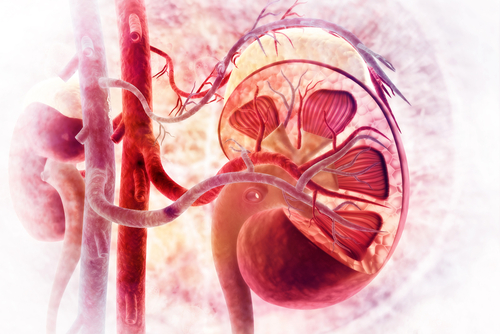AAV Transplant Recipients More Often Die With Functioning Kidney

crystal light/Shutterstock
Kidney transplant recipients, whose kidney failure stemmed from ANCA-associated vasculitis (AAV), have less risk of disease recurrence but a higher risk of dying with a functioning transplant, a recent study suggests.
These patients also had a higher risk of dying from complications due to immunosuppression and infection.
The study, “Allograft failure in kidney transplant recipients who developed kidney failure secondary to ANCA‐associated vasculitis,” was published in the journal Clinical Transplantation.
The inflammation associated with AAV can cause kidney failure, leading to the need for a transplant. Although disease recurrence appears unlikely following a kidney transplant, due to immunosuppressive medication, reported rates vary widely.
With few studies evaluating outcomes in this patient population, researchers from the University of Queensland, in Australia, compared transplant outcomes between people with AAV and other kidney diagnoses as recorded in the ANZDATA dialysis and transplant registry of Australia and New Zealand.
The investigators obtained records from 18,901 adult first-time kidney transplant recipients who received new organs between January 1990 and December 2018. Within this group, 254 people had AAV, 95 (37%) of whom developed transplant failure.
Overall, people who developed kidney failure due to AAV had low rates of acute transplant rejection, chronic kidney disease, and AAV recurrence.
However, they had the highest proportion among the groups of transplant failure due to death with a functioning transplant.
Nearly two-thirds (62 patients, or 65%) of those who developed graft failure died with a functioning transplant.
Cases of AAV associated with transplant failure were slightly more than other causes of kidney failure. Compared with other glomerular diseases — meaning those, like AAV, related to a cluster of nerve endings, spores, or small blood vessels around the end of a kidney tubule — AAV carried one of the highest rates of transplant failure.
However, when the analysis excluded those who died, regardless of their transplant status, AAV patients appeared slightly less likely to experience graft failure as compared with those with other glomerular diseases.
For instance, AAV patients were significantly more likely to develop transplant failure than individuals with IgA nephropathy, also known as Berger’s disease, when including deaths in the analysis. But the two groups grew more similar when excluding deaths.
Disease recurrence was rare among individuals with AAV, occurring at a rate of 2% over five years, which was generally lower than most other glomerular diseases.
Infection and cancer were the most common causes of death among AAV patients with a functioning transplant. Infection also was a more frequent cause of death, compared with other glomerular diseases.
Finally, a higher proportion of AAV patients who died with a functioning transplant were taking older combinations of immunosuppressive anti-rejection drugs and slightly higher doses of prednisolone, compared with other patients.
The study indicated that, despite a lower risk of disease recurrence and acute transplant rejection, transplant recipients who develop kidney failure due to AAV have a higher risk of dying with a functioning transplant, and of complications from immunosuppression and infection.
“Further investigation into whether more conservative immunosuppression targets for this group of patients are warranted,” the researchers concluded, “and may lead to improved allograft survival and reduced mortality.”






